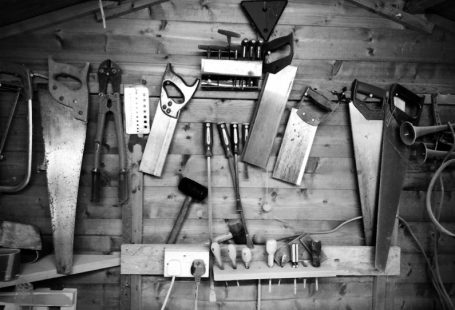Wood carving is a timeless art form that has been practiced for centuries, with its roots deeply embedded in various cultures around the world. Whether you are a beginner looking to delve into the world of wood carving or a seasoned woodworker looking to expand your knowledge, familiarizing yourself with common wood carving terms is essential. Understanding these terms will not only enhance your communication with other carvers but also help you grasp the techniques and processes involved in this intricate craft.
**Grain**
The grain refers to the direction in which the wood fibers run within a piece of wood. It plays a crucial role in wood carving as it affects how the wood will respond to the carving tools. Understanding the grain of the wood is essential for a wood carver as it helps in determining the best approach to carving a particular piece of wood.
**Chisel**
A chisel is a cutting tool with a sharp blade at the end that is used to remove wood material during carving. There are different types of chisels, each serving a specific purpose in wood carving. Common types of chisels include gouges, veiners, and parting tools, each designed to create different shapes and textures in the wood.
**Gouge**
A gouge is a type of chisel characterized by its curved cutting edge. Gouges are commonly used in wood carving to create concave shapes or remove wood in a curved fashion. They come in various sizes and shapes, with each gouge serving a specific function in carving intricate details and patterns.
**Whittling**
Whittling is a type of wood carving that involves the use of a knife to shape and carve wood. It is often considered a more casual form of wood carving, typically done with small, handheld tools. Whittling allows for greater freedom and creativity in creating simple designs or intricate details on a piece of wood.
**Chip Carving**
Chip carving is a wood carving technique that involves removing small chips of wood from a surface to create intricate patterns and designs. This technique is often used to decorate wooden objects such as bowls, plates, or furniture with geometric or floral motifs. Chip carving requires precision and attention to detail to achieve clean and crisp designs.
**Relief Carving**
Relief carving is a type of wood carving that involves carving a design into a flat piece of wood to create a three-dimensional effect. The carved elements are raised above the background surface, giving the illusion of depth and texture. Relief carving can range from simple designs to complex sculptures, requiring both artistic skill and technical expertise.
**Burning**
Wood burning, also known as pyrography, is a technique that involves using a heated metal tool to burn designs or patterns onto wood. This technique allows woodworkers to add intricate details and shading to their carvings, creating a unique and personalized touch to their work. Wood burning requires patience and precision to achieve desired results.
**Finishing**
Finishing refers to the process of treating the surface of a wood carving to protect it from moisture, wear, and damage. There are various finishing techniques, such as sanding, staining, painting, or applying a protective coat of varnish or wax. Finishing not only enhances the appearance of the wood carving but also prolongs its lifespan and durability.
**Sharpening**
Sharpening is a critical aspect of wood carving as sharp tools are essential for achieving clean and precise cuts. Keeping carving tools sharp is essential for maintaining their effectiveness and prolonging their lifespan. There are different sharpening techniques and tools available to wood carvers, such as sharpening stones, strops, and honing guides.
**In Conclusion**
Familiarizing yourself with these common wood carving terms is a valuable step towards mastering the art of wood carving. By understanding the terminology used in wood carving, you can better communicate with other carvers, follow instructional guides, and enhance your skills in this intricate craft. Whether you are a novice or an experienced woodworker, expanding your knowledge of wood carving terms will undoubtedly enrich your carving experience and help you create beautiful and intricate wood carvings.





